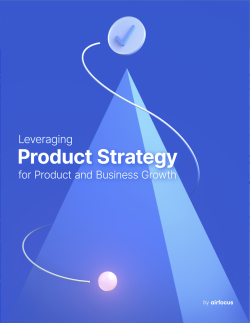Three Horizons of Growth
What are the three horizons of growth?
Three Horizons of Growth
McKinsey’s Three Horizons of Growth is a strategic framework that ensures everyone is focused on growth and innovation. It categorizes your goals into three separate time frames, which we refer to as “horizons.”
The Three Horizons of Purpose Led Growth are:
1. Maintain & Defend Core Business (present)
2. Nurture Emerging Business (steps required to reach long-term goal)
3. Create Genuinely New Business (long-term future)
The three horizons help categorize your strategies in a way that helps align focus consistently between the present needs of the business (horizon 1), its future goals (horizon 3), and the steps that lead there (horizon 2).
Horizon 1: Maintain & Defend Core Business
The first horizon represents activities most closely aligned with your current business. Most of the business’s day-to-day activities will fall into this category, along with any other immediate revenue-making activity.
Within the three horizons of growth, this first horizon focuses on the short term, from three months to a year. By understanding what the business does right now, you can define all core activities, the associated unique selling points, and any other success factors.
From there, you should look to develop activities that closely fit with the current activities. Activities like product development fit perfectly into Horizon 1.
Horizon 2: Nurture Emerging Business
The second horizon focuses on medium-term goals, around two to three years. Businesses will expand on ideas and explore new opportunities for growth during this time. This could include new strategies for customer acquisition, exploring new markets, or defining new company goals.
Activities in Horizon 2 often have an upfront cost. However, your investments during this stage will usually yield a positive ROI.
While each horizon represents a timeframe, it’s best to think of the second horizon as a bridge between Horizon 1 and Horizon 3.
Horizon 3: Create New Business
The third horizon focuses on long-term growth and innovation. This is the stage where new ideas become products, and new strategies start to pay off. Ideas in this stage may not be profitable for a significant period, but they have a high potential for marketing or customer acquisition.
Ideas in this horizon are designed to push the business forward for years. They will require significant upfront investment and present a little more risk than your short-term goals. However, they have the potential to offer the business a high level of growth and longevity.
What is the purpose of McKinsey's three horizons of growth model?
Most, if not all, companies are looking to grow. Becoming stagnant can lead to failure, especially in a competitive market, as your rival businesses will soon offer better services and value.
It can be tough to grow a business, especially as your customer base increases. For some businesses, innovation gives way to maintaining the product to ensure customers are catered to. Innovation budgets are moved to marketing and customer service, and the business quickly runs out of fresh ideas that offer a competitive edge. For other companies, the opposite can be true. They will focus heavily on innovation and forget to focus on the current day's objectives, leaving existing customers disgruntled.
When using this framework, it’s important to view each horizon concurrently. The time frames shouldn’t be seen as a prompt for when to pay attention. The three horizons framework offers a way for businesses to assess potential opportunities for growth without neglecting performance in the present.
McKinsey's Three Horizons of Growth aims to bridge the gap between the present and the long term. It creates stepping stones between running the business well in the present and growing it for the future. This helps balance your focus between the needs of today, where you want the business to be in the future, and the steps you need to take to get there.
Using the three horizons in product management: an example
The three horizons of growth can apply to product management and business growth. Implementing a coherent, long-term product strategy will help product teams to prioritize short-term wins and impactful long-term projects. It also helps teams avoid focusing on quick wins, which can dry up quickly and leave them stuck in the mud when opportunities dry up.
Product managers and strategists can use a modified version of McKinsey’s Three Horizons of Growth to create a solid framework for product strategy. This will revolve around the following:
Short-term wins that create customer value today. These will also keep the users happy, and ensure the business stays afloat and teams are motivated.
Long-term strategic achievements which are future-facing, with the potential to unlock new product areas for the future.
Foundational infrastructure, which involves projects that create a robust and adaptable product foundation. Over time they will enable faster development and quick wins while building agility into the product.
How the three horizons roadmap can help you with product strategy
Creating a roadmap that represents your three horizons for product strategy helps teams to maintain their focus on each horizon. It clearly shows the trajectory of the strategy while emphasizing which items should be focused on in the present.
The three horizons help us make better decisions regarding the products we create. They ensure we only create products that offer value to the business at each horizon. It also helps us focus on maintaining existing offerings, pushing the company to new heights.

General FAQ

Glossary categories
Create effective product strategy

Experience the new way of doing product management








